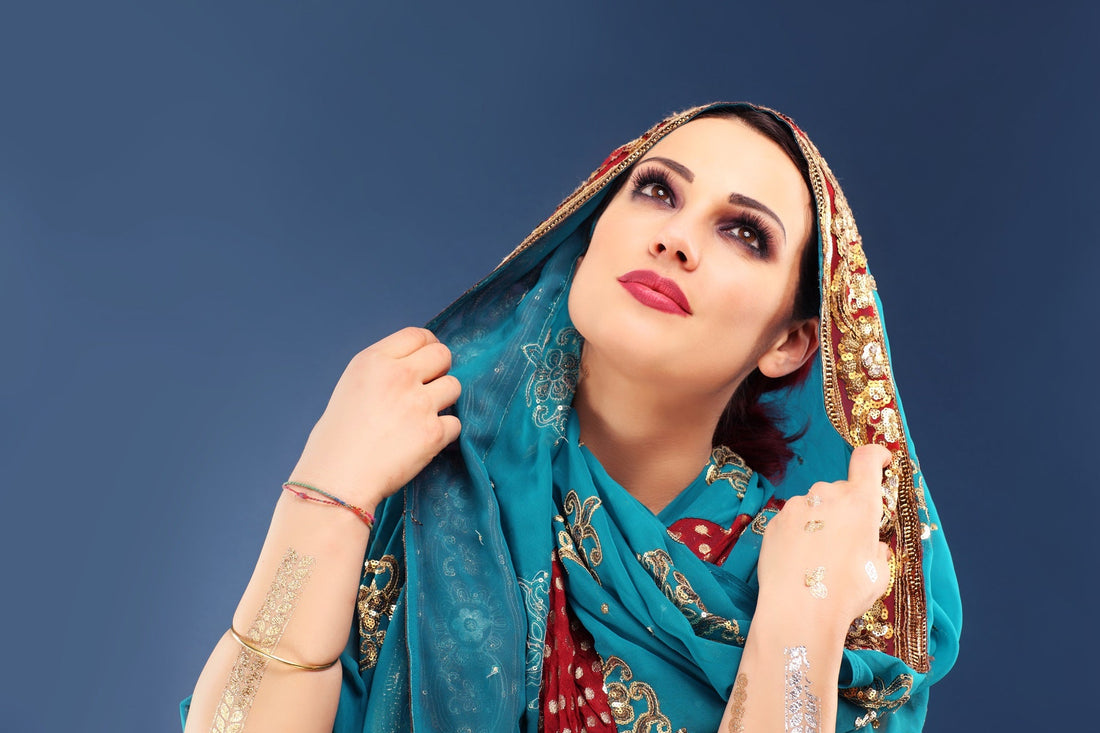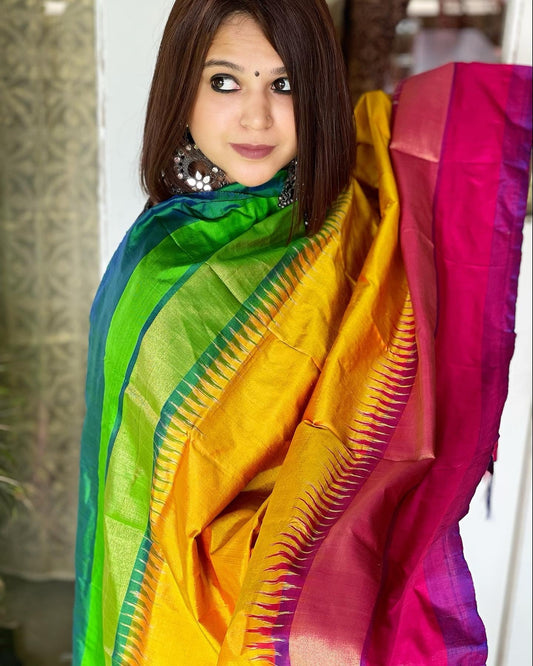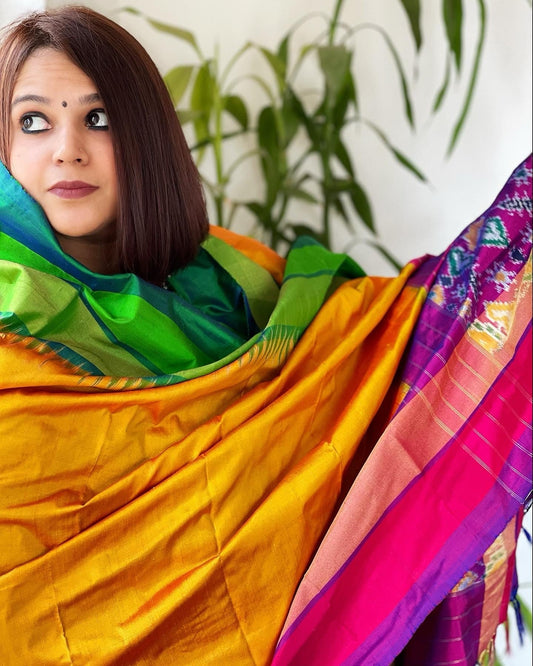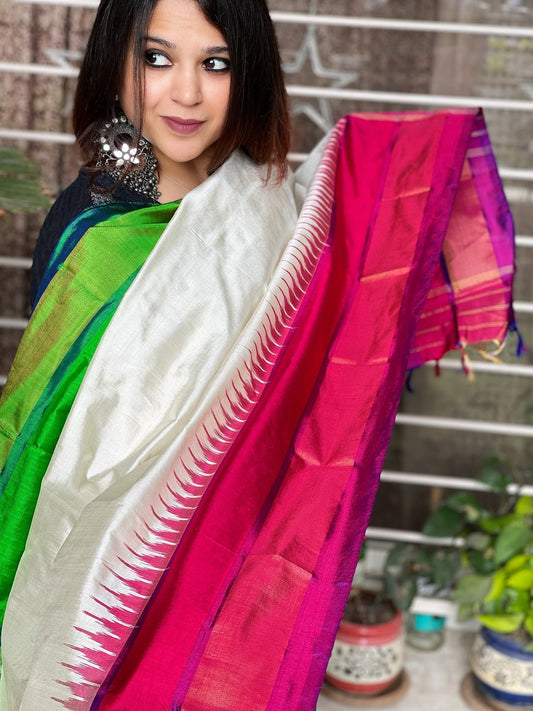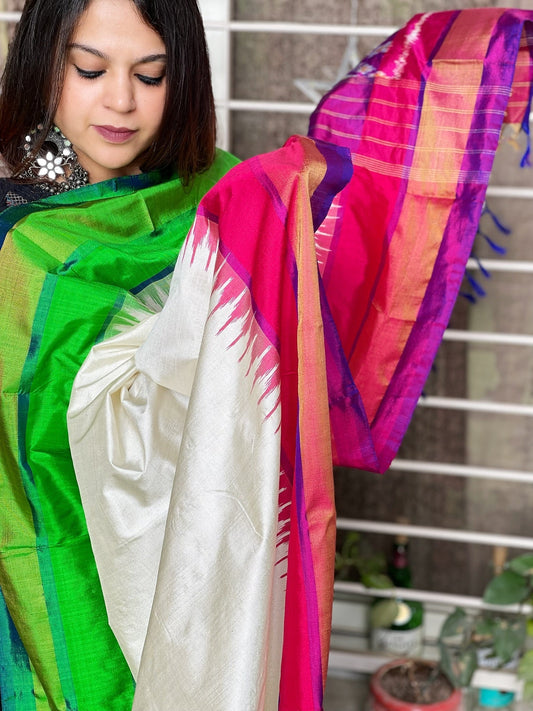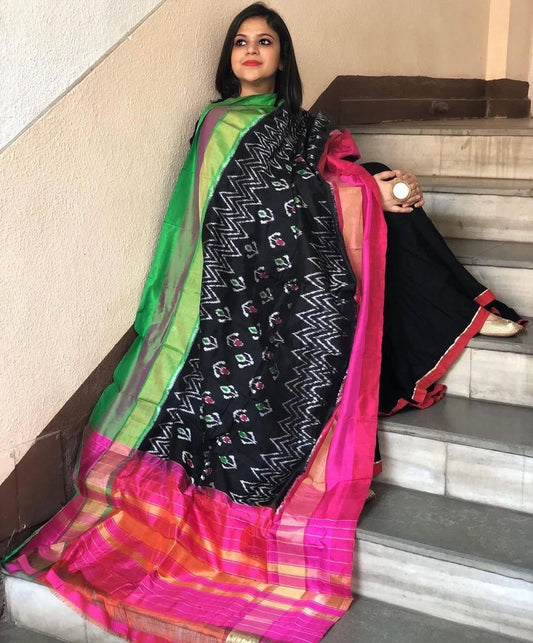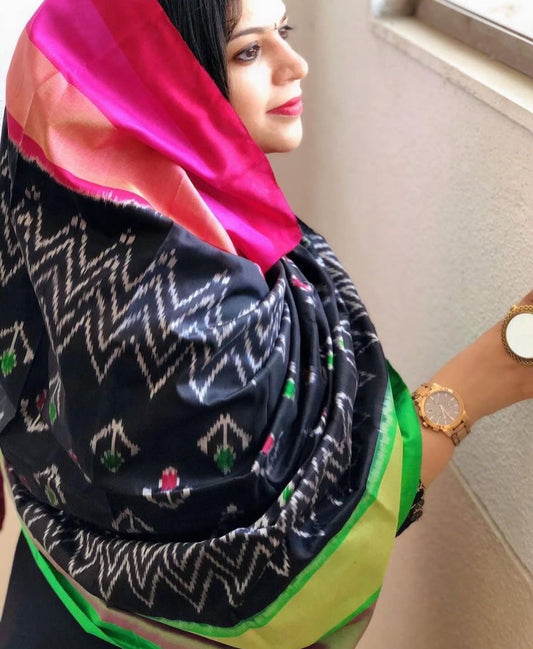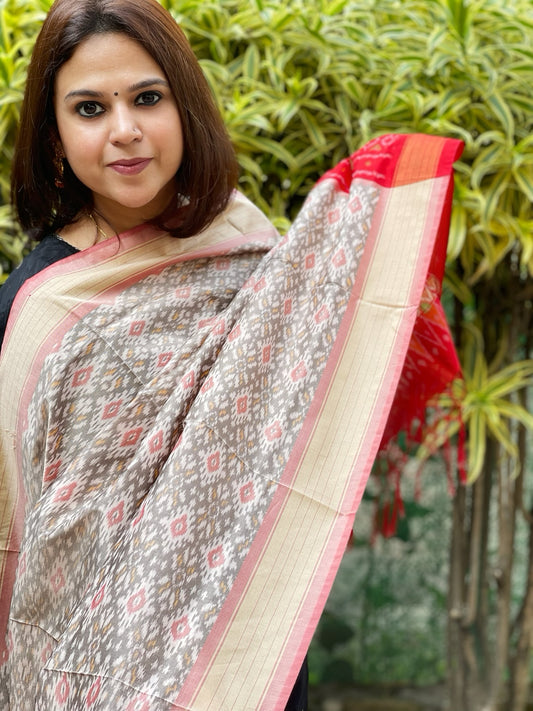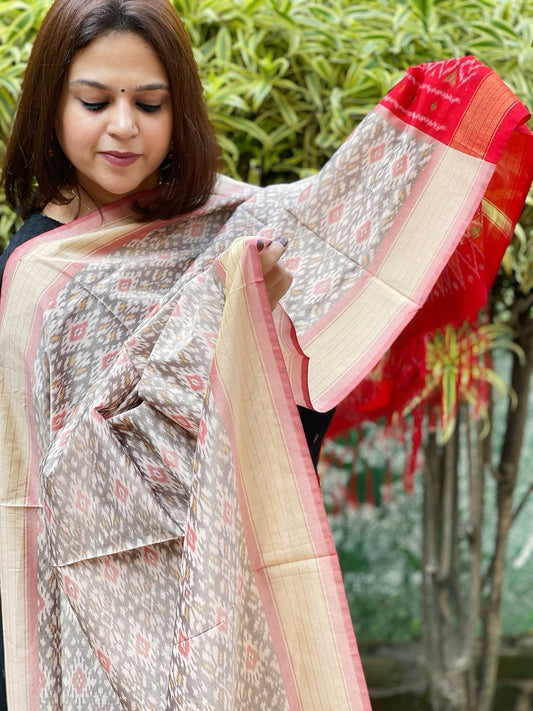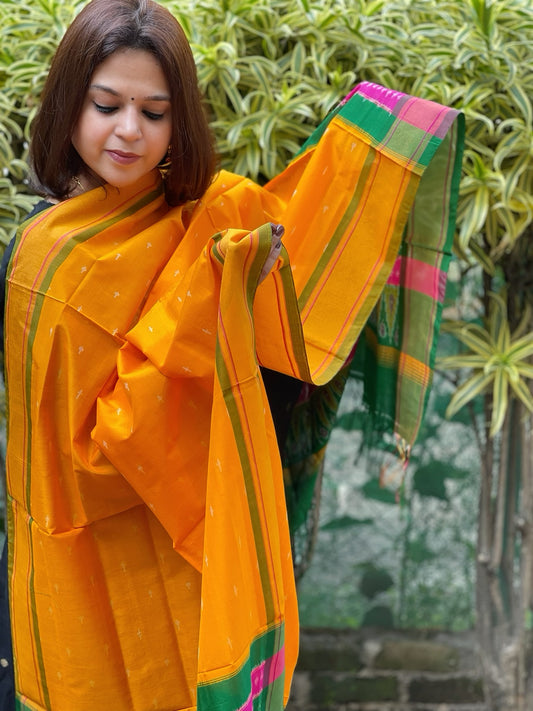Ajrakh is a form of traditional textile that is much more than just fabric; it's a symbol of heritage, meticulous artistry, and cultural pride. Originating from the vibrant lands of India, this craft has been cherished and practised for centuries, carrying with it stories of ancient traditions and artisanal perseverance. This craft adorns the wearer and tells a tale of the meticulous effort that goes into making each piece.
This exquisite textile is primarily found in the Indian states of Gujarat and Rajasthan, but its influence and beauty reach far beyond. The name 'Ajrakh' may come from 'Azrak', meaning 'blue' in Arabic and Persian, highlighting the craft’s distinguished use of natural dyes that create its signature deep indigo and crimson hues.
The age-old techniques used to produce Ajrakh involve a profound understanding of the craft’s intricate details and the environment, including the phases of the moon and the changing seasons, which guide the timing of the many steps involved in its creation.
At Masakalee, we celebrate the deep-rooted traditions and skilled craftsmanship that bring Ajrakh to life. Each piece in our collection is a testament to the artisans' dedication, highlighting their detailed work and the unique characteristics that make every piece one of a kind. It’s not just about wearing a piece of fabric—it’s about bearing a part of history, culture, and timeless art.
Join us as we delve deeper into the world of Ajrakh, exploring its origins, its journey through the ages, and the hands that craft it with love and great skill.
Decoding Ajrakh: Exploring the Name and Origins
The enigmatic name "Ajrakh," which hints at its storied past, has stirred curiosity and enchanted many. Often, the name is derived from the Arabic word ‘Azrak’, meaning ‘blue’, which reflects the dominant colour used in this textile.
However, another compelling theory suggests that it originates from ‘Aaj ke din rakh’ in Hindi, meaning 'keep it for today,' which resonates with the slow and rhythmic process of making Ajrakh, where time is an essential ingredient. This intricate craft dates back over 4000 years, with its roots deeply embedded in the ancient civilizations of the Indus Valley.
Our appreciation for Ajrakh is not just about its visual or tactile beauty but its historical and cultural significance. Originating from present-day Pakistani Sindh, which was part of ancient India, the craft travelled across Rajasthan and Gujarat, where it flourished.
Artisans have handed down their age-old skills through generations, maintaining the sanctity and traditional methods, despite the changing tides of time and technology. These artisans, guardians of their heritage, continue to practice Ajrakh in the small communities of Kutch, Gujarat, and Barmer, Rajasthan, preserving its legacy.
Tracing the Roots: Ajrakh’s Journey from Ancient Times
Understanding Ajrak's journey through the ages enriches our appreciation for this craft. Ajrakh has stood the test of time, surviving various shifts in geo-political and cultural scenarios across centuries.
Historians suggest that Ajrakh printing was brought to the Khavda region in Kutch, Gujarat, by Muslim Khatris more than 400 years ago. These artisans, originally from Sindh (now in Pakistan), were inspired by the local demand for such craftsmanship in their new environment, adapting their art to local tastes while keeping the essence intact.
The craft involves a detailed 16-step process starting from the treatment of the fabric right up to the final printing, all of which are usually governed by the lunar cycle, echoing the artisans' deep connection with nature. In a world where fast fashion dominates, Ajrakh remains a testament to the beauty of slowing down and giving attention to detail.
These age-old practices have imbued Ajrakh with a sense of timeless appeal, making each piece not merely an item of clothing but a wearable piece of history. The tradition of Ajrakh is a dance of colour, pattern, and skill—one that echoes the rhythms of nature and the legacy of generations.
The Art of Ajrakh: A Step-by-Step Guide to Production
The creation of Ajrakh is a testament to the art of patience and precision. This lengthy process, traditionally done by hand, requires not only artistic skills but also an extensive knowledge of the techniques passed down through generations.
To start, the cloth is first washed to remove impurities and then soaked in a series of natural dyes. The use of natural elements such as indigo for blue, henna for red, and turmeric for yellow showcases the artisans' deep connection with their environment.
After the initial preparation, the fabric is treated with a resist paste made from gum, lime, and molasses, followed by the first round of printing using carved wooden blocks. The cloth is then left to dry before it is immersed in a dye bath. Multiple layers of printing and washing are repeated to ensure the clarity and depth of the design.
Each stage is sun-dried and carefully monitored, as weather plays a critical role in determining the outcome of the colours. Completing a single piece can take anywhere from two weeks to a month, depending on the complexity and number of colours involved in the design.
Embracing Imperfections: The Unique Character of Ajrakh
Ajrakh is more than its symmetry and patterns—it’s about embracing the natural imperfections that arise during the handcrafted process. Unlike machine-made fabrics, each Ajrakh piece bears slight irregularities that are a hallmark of human touch. These variations ensure that no two pieces are exactly alike, giving each its unique character.
The imperfections, whether they are in the form of a slight misalignment of the block or a variation in the shade of the dye, add to the authenticity of the craft. They tell a story of the painstaking process and the personal care that goes into each stage of production. For us, these characteristics are not flaws; rather, they are what make Ajrakh truly special and highly valued among lovers of traditional textiles.
Discover Ajrakh: A Celebration of Craft at Masakalee
Here at Masakalee, we celebrate the intricate beauty and rich history of Ajrakh. Each piece in our collection embodies the traditions that have been nurtured by skilled artisans over centuries. By choosing an Ajrakh from our range, you not only adorn yourself with a beautiful product but also support the artisans and their craft that have been handed down through generations.
We invite you to explore the timeless elegance of Ajrakh prints and discover a piece that speaks to you. Whether you're seeking something for a special occasion or a gift for someone dear, our handcrafted Ajrakh collection offers something unique that is bound to captivate. Delve into the world of traditional Indian textiles and let the charm of Ajrakh add a touch of heritage to your wardrobe. Visit Masakalee today and find your exclusive piece of artistry!

